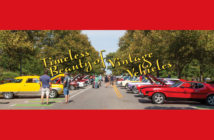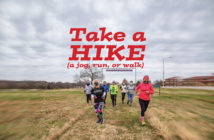| story by | |
| photos by | Steven Hertzog |
Bikes are key to Lawrence moving forward in its commitment to becoming more of a multimodal society.
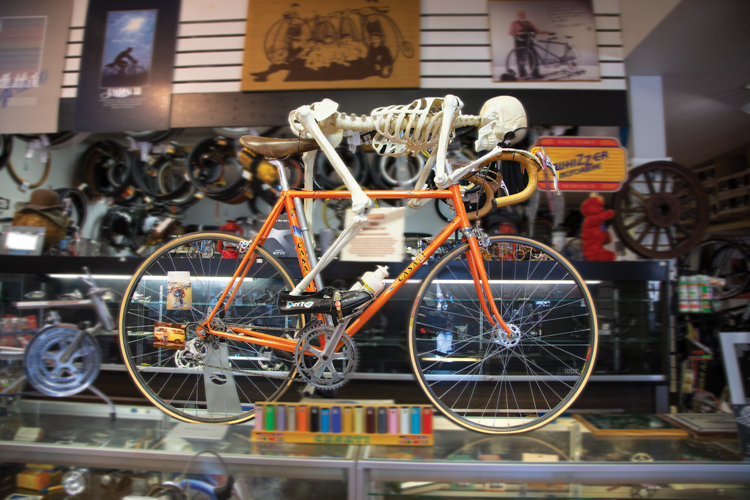
Cycle Works
As a society, we have been dependent on cars for decades. Many things contributed to this dependence, including economic and population growth, rapid suburbanization and the closing of public transit systems. The abundant use of cars in American cities is responsible for air pollution, congestion, noise, less open space, traffic accidents and inadequate mobility for the poor, elderly and handicapped.
After World War II, the number of cars and trucks in the United States increased dramatically, as did the number of highways. The rapid increase of motor vehicles and, thus, air pollution, especially in cities, has had serious impacts on public health and the environment. According to the U.S. Environmental Protection Agency, motor vehicles collectively cause 75 percent of carbon monoxide pollution in the U.S.
So how do we change our ways in a society that has become so reliant on the car?
Even though the Clean Air Act of 1970 has helped reduce toxic emissions and improved the overall health of Americans, we still have a long way to go.
Emmanuel Cohen explains that combining all modes of transport into one platform allows for sustainable transport options without asking people to ditch the car. “Instead of helping other modes of transport compete with the car, city governments and transport providers can help them complement it,” says the head of content and social media at HERE Mobility, a global and open transportation marketplace dedicated to making urban mobility more efficient.
Almost 70 percent of all trips in the United States occur via personal car, he continues in his blog post “Multimodal Transportation: The Future of Urban Mobility.” “Across the western world, buses, trains, bicycles and new devices like electric scooters are finding it difficult to compete with the perceived convenience of the car. However, the reliance on private vehicles poses a real threat to the future of cities.”
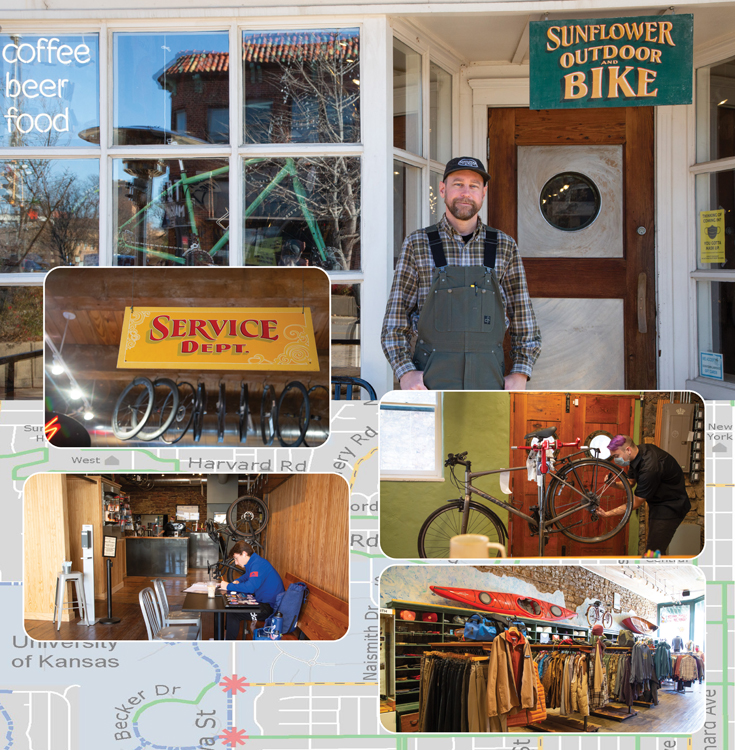
Sunflower Outdoor and Bike Shop manager Paul Heimbach; Repairing bikes at Sunflower; Sunflower goods; New Coffee Bar at Sunflower
A Multimodal Society
In a college town like Lawrence, one of the big ways to complement the car is via bicycle. “We are so dependent on automobiles, and cars aren’t necessarily the best way to travel within a city: They pollute, they’re expensive and they have to be parked, which takes up a lot of space,” says Kathryn Schartz, secretary and board member of the Lawrence Bicycle Club (LBC), which promotes safe cycling for recreation, sport and fitness in the Lawrence community. “If a community can provide safe alternatives to driving cars that are viewed as convenient and workable by cyclists, pedestrians, scooters, etc., more people will consider alternatives to automobiles.”
As a four-year member of the Lawrence Multimodal Transportation Commission (MMTC), which works to advance the health, safety and welfare of all residents of the city of Lawrence through strong multimodal transportation planning, she says these issues are discussed at all of the meetings. “I really believe the city wants to address all of this, but when push comes to shove, the needs of automobiles always seem to prevail.”
But being a college town, bikes are already very popular in Lawrence. “Many students lack resources, space, etc., to maintain a vehicle,” explains Rich Cornell, LBC president. “And short jaunts can be well-designed for other transportation methods.”
Paul Heimbach, Sunflower Outdoor and Bike Shop manager, agrees, saying bikes, already an integral part of our community, are an efficient way to travel short to long distances without polluting and causing all of the sorts of issues that are dealt with by the use of cars.
“My regular customers on the bike side are people who use bikes as a mode of transportation or recreation,” he continues. “We get a lot of riders who use bikes as a means to get around town but also use cycling as a way for exercise and recreation.”
Heimbach says the city is doing a good job promoting the use of bikes by setting up bike lanes and designating streets as riding corridors. But he believes it could encourage more bike use by offering incentives to ride. “Perhaps this could be in the form of giving businesses that have their employees ride to work tax rebates or some other means to promote ridership.”
Samantha Jones, president of the Lawrence Mountain Bike Club, which is the primary caretaker of the Lawrence River Trails, also believes bikes should be an integral part of the process of moving Lawrence further into a multimodal system. “Bikes are a great mode of transportation,” she explains. “They leave a small ecological footprint, encourage mental and physical health, and when operated correctly, can provide a safe, reliable and affordable means of transportation.”

Cycle Works owner Gary
Enhancing a Healthy Lifestyle
Creating and leaving behind a healthy environment to our kids and grandkids is a huge component of the multimodal concept, but establishing an overall healthy lifestyle for community members is important, as well.
“Bikes enhance my life by helping me stay fit both physically and mentally,” Heimbach explains. “It is a great cardiovascular workout. I often feel better after a ride because of the endorphins I get from the physical activity and losing myself mentally from turning over the pedals and watching the landscape go by. I also think that riding a bike can make me mentally tougher because of some of the obstacles you have to overcome, such as long miles or strong winds.
“I love the feel of the open road and a sense of adventure while on two wheels,” he continues. “My favorite rides take me to places that I may have never been to if it weren’t for me riding to it. I get a great feeling of freedom while riding.”
In addition to the traditional bike paths throughout town, Lawrence also offers a variety of free, well-maintained trails, including the Lawrence River Trails, a nine-mile loop in North Lawrence maintained by LMBC; the Lawrence Loop, a 22-mile trail around the city; Clinton Lake Trails; the Rock Chalk Park Trails; and the Riverfront Park Trails, among others.
LBC’s Cornell believes the city should consider connecting its trails, multiuse paths and nonvehicle paths as an important part of this multimodal concept, offering cyclists the opportunity to safely move from one part of the town to another.
Schartz agrees, saying that even though the Lawrence Loop is off-road, cyclists have to cross many intersections. “Drivers are simply not used to looking both ways on sidewalks and approach intersections with their eyes on the street. I’ve had many close calls at intersections.”
A Close-Knit Community
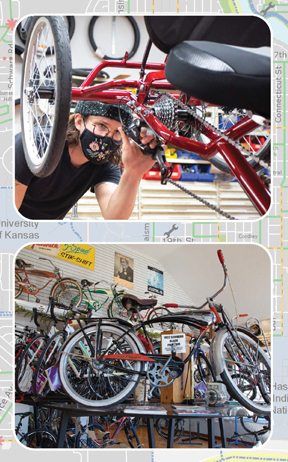
Mechanic Henry Mackinnon; Bikes at Cycle Works
Henry Mackinnon, mechanic at Cycle Works, a shop that sells bikes, apparel and exercise equipment, but is most popular for its service, helping customers maintain and upgrade their bikes, says cycling has improved many aspects of his life. “It became my ride to work, an excuse to socialize during the pandemic [and]has become an important tool to exercise and just get outside. There is also a very helpful community of riders in town.”
This “community” includes clubs for just about every style of riding. These clubs offer information, education and support for its members and community members.
“While we have many different sects of biking—mountain, gravel, road and commuter, for example—we still have a fantastic community,” LMBC’s Jones says. “Many members of these individual sects bleed into the other groups so that we are all intertwined together. The community really shows through when one club or another has a specific need, such as a fund-raiser for a specific need or a cause to which we can all support.”
Sunflower’s Heimbach agrees. “What is great is that we all pretty much know each other, and those who are new to it … [it’s] easy to make friends with within the community.”
Both the Lawrence Bicycle Club and the Lawrence Mountain Bike Club can be found on Facebook.
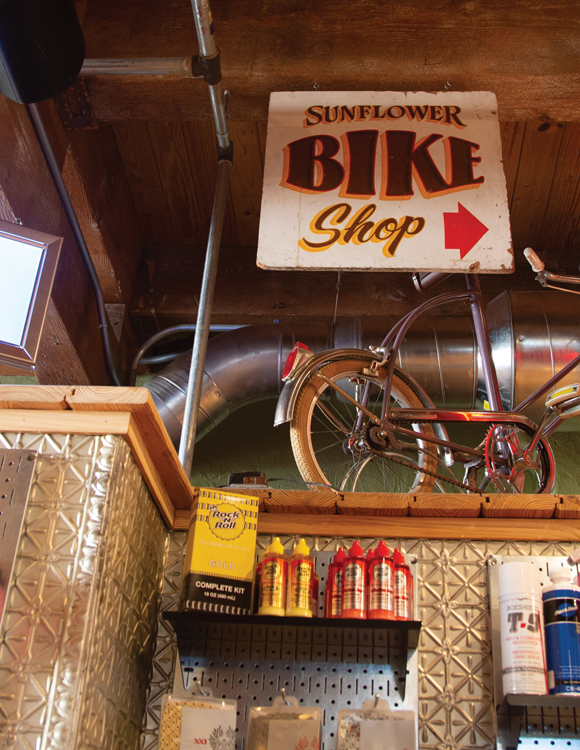
Sunflower
The Future of Multimodal
Though Lawrence is moving toward a multimodal approach, it still has a long road ahead.
Nick Kuzmyak, chair of the Multimodal Transportation Commission (MMTC) for 2020, believes we need to prioritize cycling as a utility, as well, “or the stigma around cyclists (that they’re either Lycra-clad enthusiasts or unpredictable kids) will always remain. People need to view and respect cyclists as equal road users, and we’ll never get there if only the recreational trails get funded,” he explains. “City staff understand that this broad approach is important.”
One way to “get there” is through the City’s Bike Boulevard projects. According to the City website, it is working to increase safe and comfortable cycling for those living, working and visiting here. Plans have been finalized for both boulevard projects: one on East 13th Street and one on West 21st Street, which is set to be finished by the end of 2020. They will be the first of their kind in Lawrence and are an important step in expanding the network of safe and comfortable streets for biking in the community.
“The Bike Boulevard projects showed a distinct breakdown between what the public wants now and what the future public would actually use,” Kuzmyak says. “Bike Boulevards are not necessarily for experienced cyclists; they are meant to make shared roads safer and more welcoming for new or unconfident riders. People who only drive may see a lack of cycling on these streets and deem the boulevards wasteful projects that won’t help anyone, but this points to a natural fallacy: Most people have difficulty seeing what could be instead of what is. We’ll only know in a few years if the projects achieved their aim.”
He believes bike boulevards tap into a large percentage of people in the community who may want to bike but are currently uncomfortable with the infrastructure in Lawrence (especially unprotected bike lanes and sharrows). They are a safe introduction for learning how to ride with traffic, while the feature of slow car traffic actually benefits all users of the street. Case studies in other cities point to increasing ridership on these types of streets.
“Lawrence is so close to building a strong and complete community with resources for the betterment of public life,” Cycle Works Mackinnon says. “Our infrastructure plays a key part in the foundation of our community and its well-being, and implementing multimodal infrastructure would be a crucial stepping-stone in creating a healthy community.”
Schartz agrees, adding that the City should include multimodal transportation in all new development and require it to be put in place before new areas are developed.
“I believe Lawrence continues to move in the right direction of incorporating and encouraging multimodal transportation,” LMBC’s Jones says. “In the last few years, we have seen an increased number of trails and bike lanes, as well as some experimental intersections. We all know the City has to work within a budget and prioritize; thus, I’m happy to see that they continue to consider viable options for alternative transportation.”
![]()



